Baroque Hallucinations
The Bomarzo Park --"There are places that are signatures..." Mary Butts
Thirty years ago on a drab spring day of gray clouds and punishing winds, I stumbled upon the Park of Bomarzo, where I explored its meanders almost in complete solitude. I knew nothing about the philosophy behind formal Italian gardens at that time – or why this place was such a radical deviation from the norm. I knew nothing about the man who had willed it into being as a memorial to his wife: Pier Francesco (aka Vicino) Orsini, a visionary and alchemist.
That morning, I found the grounds overgrown and ill-kept, silent and dreary, its eerie sculptures deeply veined in moss. I marveled at twin-tailed mermaids, busty griffins, jolly little bears holding up heraldic shields. I climbed into a cavern which was an ogre’s mouth where “All thoughts fly,” and lost my balance in a leaning tower.
Some of the surreal sculptures emerging from interwoven ilex boughs reminded me of figures in alchemical treatises; others evoked gods and goddesses of Greek mythology. Some portrayed disturbing acts of violence. I came away stunned by the strangeness of it all, and by the very strong feeling that it concealed a message transmitted through time – but who could read it now?
Over the next two decades or so, the mystery of the Park gnawed at my imagination. I had more opportunities to visit Bomarzo, to learn about the extraordinary area of the Tuscia, home to several esoteric gardens both ancient and contemporary, and to puzzle over this one. Volumes have been filled with debates concerning the artist/s who designed and executed the Bomarzo sculptures, and especially concerning what the whole thing is supposed to mean.
Some critics claim the park is a book of emblems hewn in stone. Others, a collection of images drawn from Vicino’s nightmares. It does make a powerful impression on all those who visit there, not always a pleasant one. There is something rough, somber and unsettling about the park, which Vicino described as The Sacred Grove.
Many critics believe that the Bomarzo Park was designed as a pathway to initiation – and that the hallucinatory sculptures mark the phases on a spiritual journey leading down through hell or the underworld and back up into the light. Near the center of the park a giantess triumphs –identified as Persephone, watched over by a Hades sprawled high above a fountain. The journey traced by the park’s walkways then is akin to the Eleusinian mysteries- the search to find and liberate a lost child—which may be our own innocence, our essence, our soul.
After years of reading and dreaming about the place, and many visits in different seasons, the outline of a story began to knit itself together in my imagination: the story of a woman, a writer, who while visiting the area finds herself ensnared in two separate mysteries: the mystery of the park and its meaning and the solving of a crime.
In my novel, Signatures in Stone, occult mystery writer Daphne DuBlanc comes to Bomarzo to write a new book, but ends up as the prime suspect for a murder that takes place in the park. Daphne has a theory that by reading signs or “signatures” scattered all around us, we can uncover hidden truths and even predict the future. She finds the park full of signatures which she must interpret to save her skin and solve the crime. In doing so, she will also unravel the enigma of the Park of Monsters: Who made it — and why —and above all, she will discover the secret of its destructive and redemptive power over all those who wander there.
Here are a few glimpses of the park featured in Signatures in Stone, which won the Daphne DuMaurier award for Mystery and suspense writing in 2014, and was republished in a second edition in 2023 by Pleasure Boat Studio.
Daphne comes to Bomarzo to write a new book…
“Midway down a steep descent, we came to a gate behind which a somber villa illuminated by flickering torchlight waited at the end of a gravel drive. Lining the drive all the way to the villa were tall cypress trees, like hooded figures in the dusk.”
“The landscape was full of signatures, signs, and hidden meanings, I felt. An entire manuscript was displayed before my eyes, inviting me to decipher its alphabets, offering inspiration for the new novel I had come to Italy to write.”
Daphne’s signatures
“Without inspiration, I could not write. What I needed was a new batch of signatures, those curious messages our waking life sends us from our own unconscious, which I have come to see as promptings from the muse, and even as a spiritual guide for my own existence.”
“We are constantly immersed in a network of signs and symbols, whose meaning eludes us, but which, if only we could read them, would reveal every detail of our past and even predict our future.”
“The mind talks to itself not with words, but with scrambled symbols, pictures, fragments, often severed from any literal meaning. If we wish to learn to read them, we must abandon the rational links of words to thoughts. Signatures are always there waiting for us, like unopened letters slid beneath the front door, accumulating after a long period of absence, written in a hieroglyphic alphabet we have forgotten.”
The Park Beckons
“Behind me, the moonlit villa seemed dwarfed by the shadowy mass of the ridge overhanging it, where the old stone houses and towers of the town clung to the edge like moldering teeth set in a jawbone. The gate to the park was locked, of course, and tall walls of shaggy yew hedges obscured the view within. I peered in through the iron bars, but all I could see was a gray sphinx crouching at the head of a path vanishing amid the thick vegetation where boulders were visible beyond.”
Daphne makes her first visit to the Park.
“The statues portrayed a series of monstrous, imaginary creatures—denizens of a pagan hell, or, perhaps, allegories of the seven cardinal sins. The place was known to local legend as “the Monster Park.” As an author of mystery stories, I confess I found it all quite appealing.”
“Strewn around us were river gods, pouting putti, lustful Pans; ogres, nymphs and beasties; creatures shaken free from the bowels of the earth by some cataclysm, ready to sink back in at a moment’s notice if the earth should heave again.”
They came at you helter skelter, truly like images in a dream. Wherever a crest of rock or boulder protruded from the ground, there had the sculptor’s chisel captured another frenzied spirit of the underworld.”

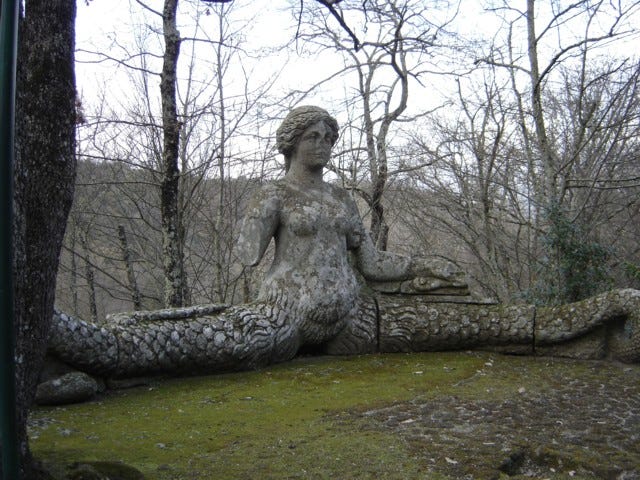
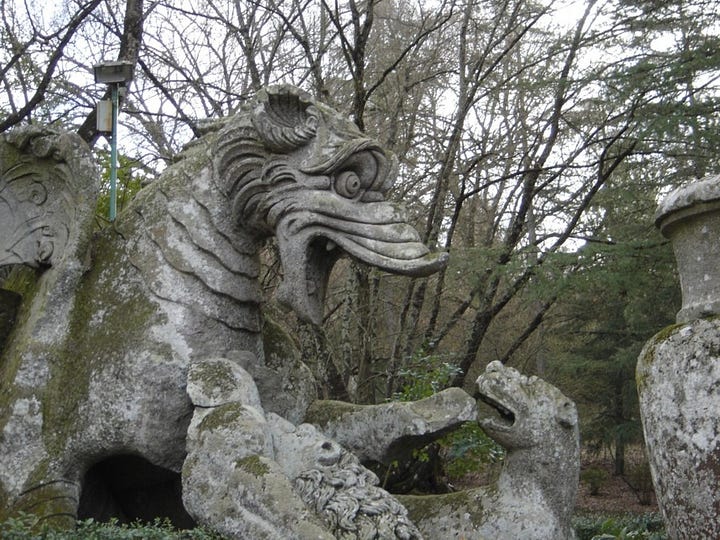
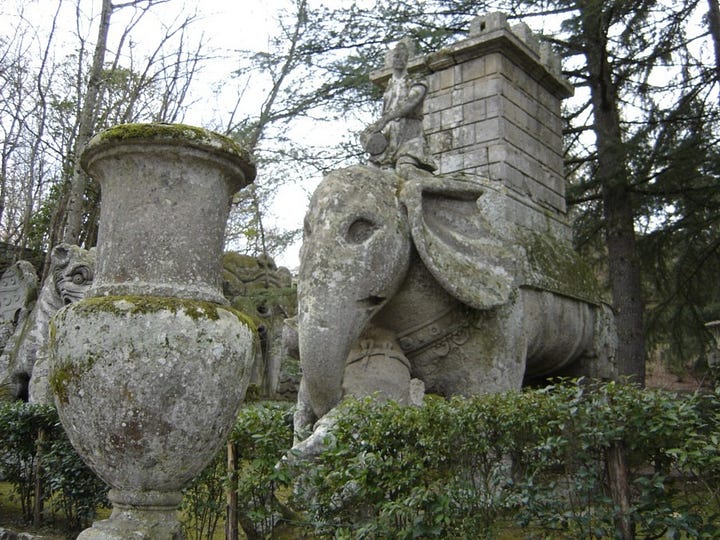
Professor Finestone explains the Park to Daphne
“In the mid-sixteenth century when this place was created, parks and gardens were meant to offer more than just an aesthetic experience…They were models of the cosmos and also tools for altering one’s consciousness, possibly for changing one’s destiny. Every detail was intended to produce a specific effect on the mind and body, to excite and soothe the sense like a drug. To awaken the unconscious self.”
“The horrific statues carved here may be viewed as fragments of consciousness itself, the residue of violent emotions. The local peasants once believed the statues came to life at night. Were they not held down and impeded by all these brambles and vines, they might break loose and go marauding through the town. Even in recent times, they have been known to roar in the night.”
“And have you heard them,” I asked? Finestone smiled. “Only in my dreams.”
“It was the hour of Pan and I could not feel the heat of the sun.”
Seeking inspiration in the timeless Italian landscape, four unlikely misfits find their destinies entangled in the meanders of the mysterious sculpture garden of Bomarzo. Daphne, a writer gifted with second sight; Clive, an American gigolo and aspiring artist; Nigel, an English aristocrat down at the heels, and Finestone, a shady art historian who has made a discovery which will rewrite the history of Italian art. To find their heart’s desire, they must all descend into the Hell Mouth of Bomarzo – but not everyone will make it out alive.




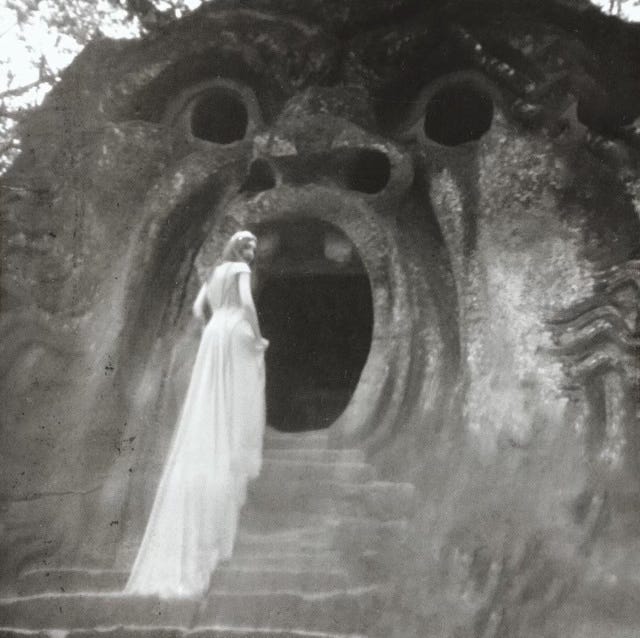

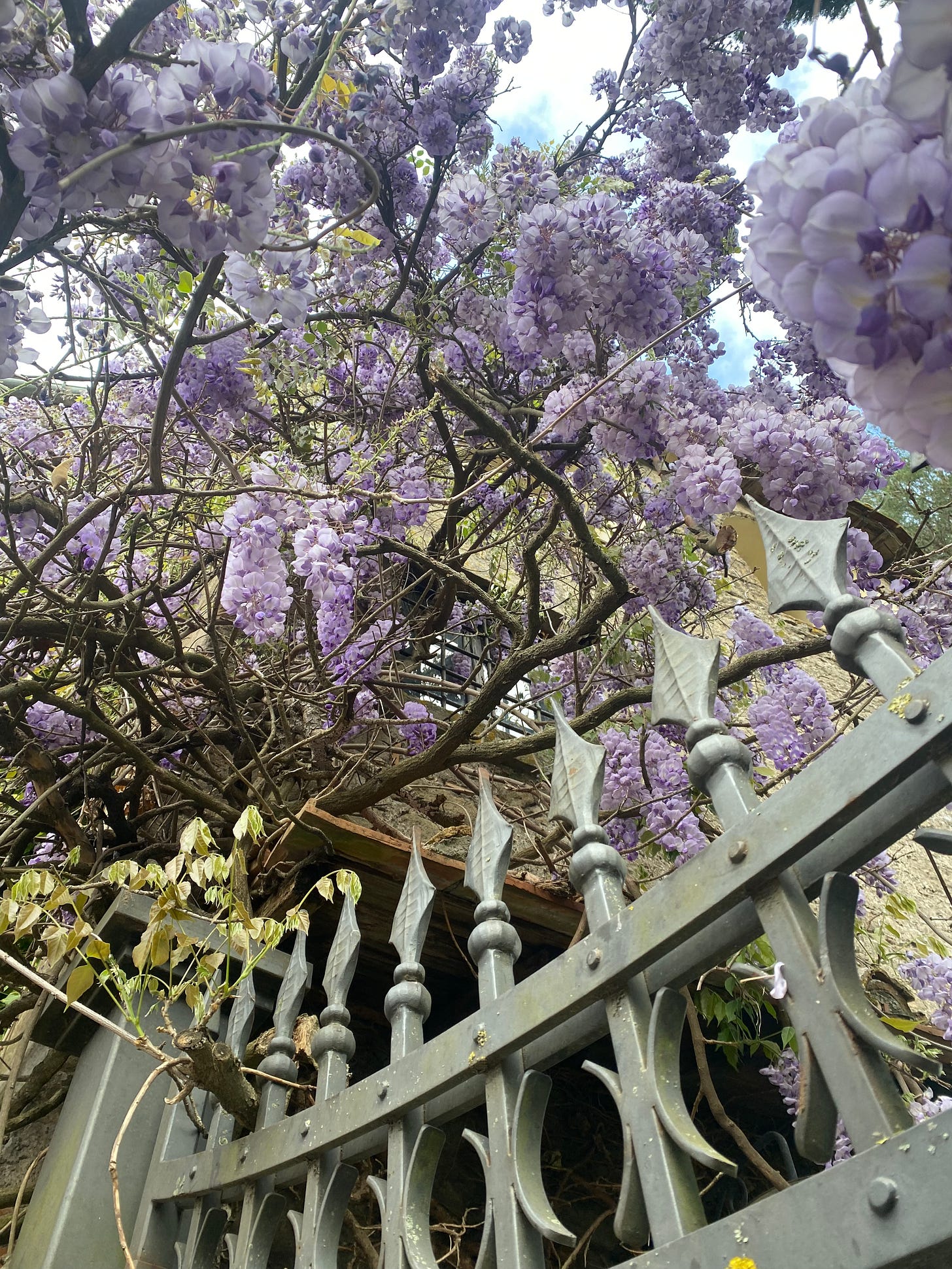

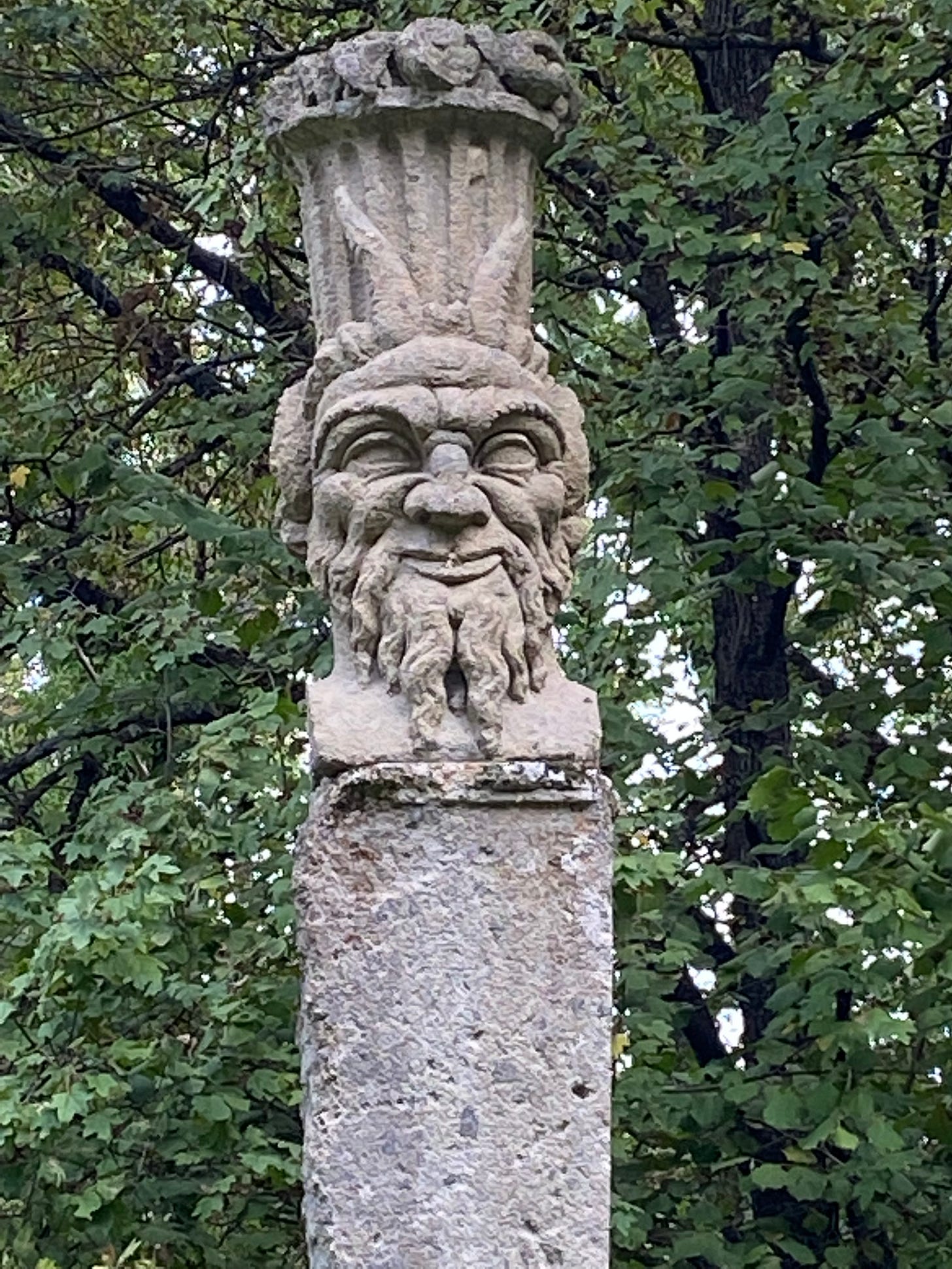
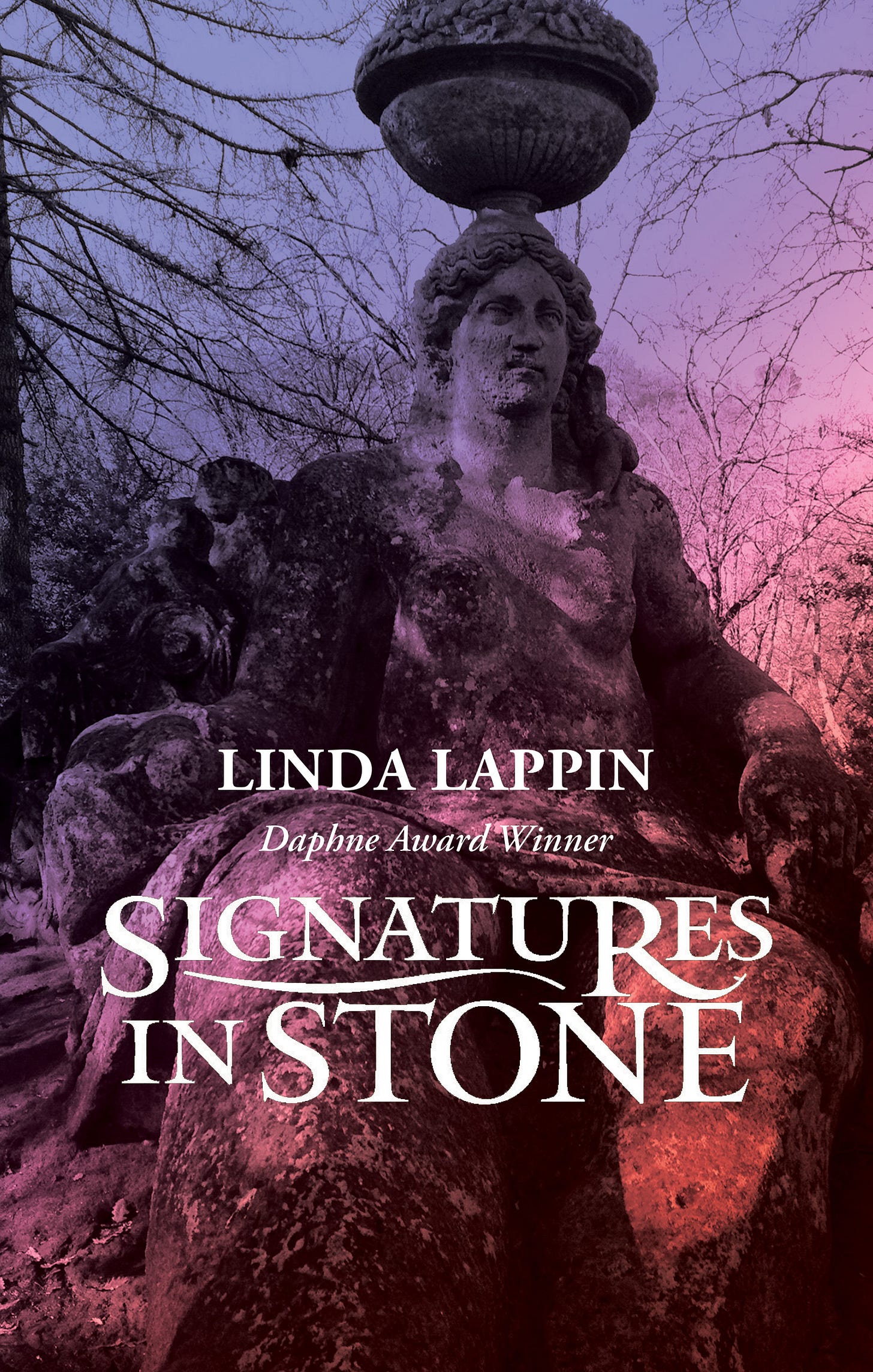
And to anyone who hasn't read Linda's book, I suggest you will love it.
Yes, Linda, it is an intriguing place to visit. I remember it well. Thanks for reminding me.